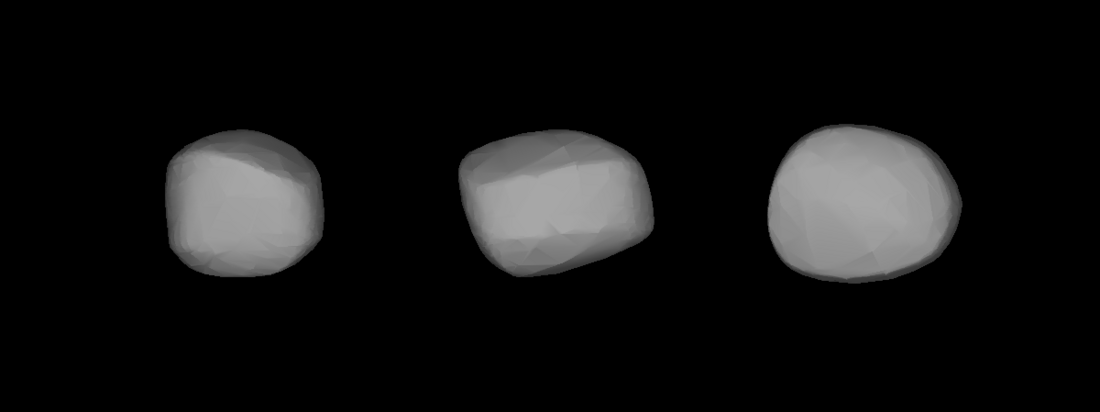Top Qs
Timeline
Chat
Perspective
69 Hesperia
Main-belt asteroid From Wikipedia, the free encyclopedia
Remove ads
69 Hesperia is a large, M-type main-belt asteroid. It was discovered by the Italian astronomer Giovanni Schiaparelli on April 29, 1861[1] from Milan, while he was searching for the recently discovered 63 Ausonia.[7] It was his only asteroid discovery. Schiaparelli named it Hesperia in honour of Italy (the word is a Greek term for the peninsula).[8] The asteroid is orbiting the Sun with a period of 5.14 years, a semimajor axis of 2.980 AU, and eccentricity of 0.165. The orbital plane is inclined by an angle of 8.59° to the plane of the ecliptic.
Hesperia was observed by Arecibo radar in February 2010.[5] Radar observations combined with lightcurve-based shape models, lead to a diameter estimate of 110 ± 15 km (68 ± 9.3 mi). The radar albedo is consistent with a high-metal M-type asteroid.[5] In the near infrared, a weak absorption feature near a wavelength of 0.9 μm can be attributed to orthopyroxenes on the surface.[9] A meteorite analogue of the reflectance spectra from 69 Hesperia is the Hoba ataxite.[10]
Remove ads
References
External links
Wikiwand - on
Seamless Wikipedia browsing. On steroids.
Remove ads

